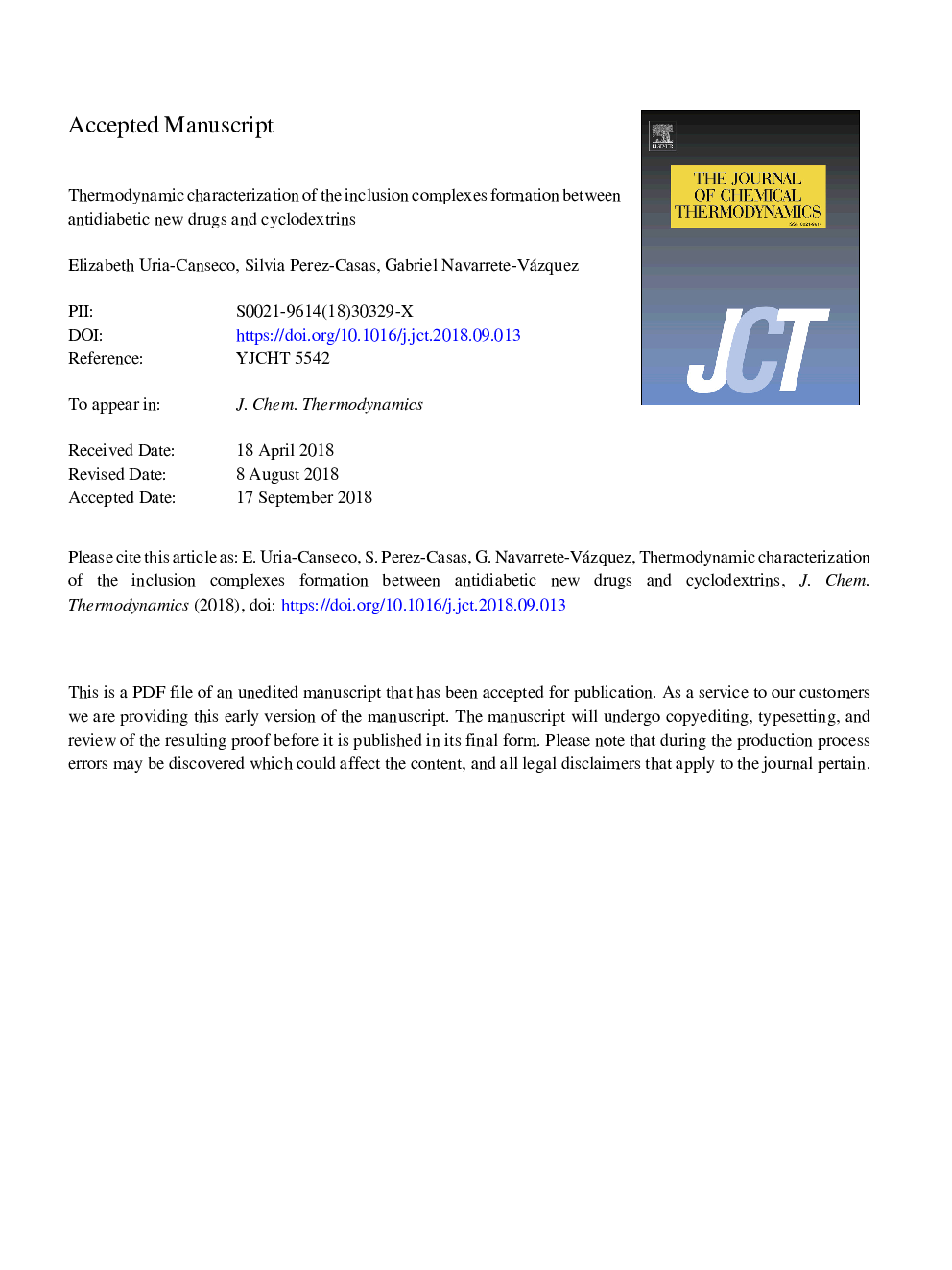| Article ID | Journal | Published Year | Pages | File Type |
|---|---|---|---|---|
| 11028245 | The Journal of Chemical Thermodynamics | 2019 | 32 Pages |
Abstract
Inclusion complexes were formed using β-cyclodextrin and hydroxypropyl-β-cyclodextrin to encapsulate a series of new non-steroidal drugs with antidiabetic properties presenting low water solubility. Complexes were thermodynamically characterized through Isothermal Titration Calorimetry (ITC). The 298â¯K complexation process turned out to be spontaneous in all cases, mainly because it was guided by entropy. It was found that the two main functional groups forming the studied drugs were able to interact with the cyclodextrin cavity, data suggest a 1:1 stoichiometry. Steric hindrance and host desolvation play a fundamental role in the drug's cyclodextrin cavity incorporation. This study increases treatment possibilities for type 2 diabetes mellitus using FDA-approved biocompatible drug delivery systems, thus increasing solubility and application possibilities of the encapsulated active substance.
Related Topics
Physical Sciences and Engineering
Chemical Engineering
Chemical Engineering (General)
Authors
Elizabeth Uria-Canseco, Silvia Perez-Casas, Gabriel Navarrete-Vázquez,
